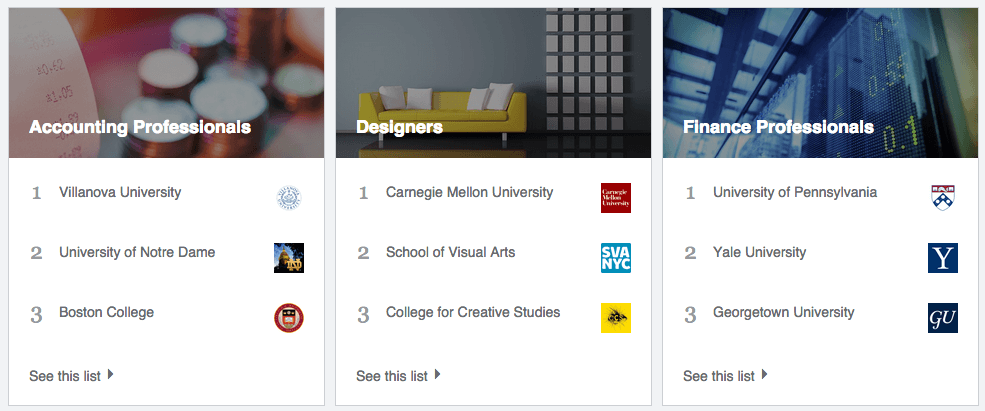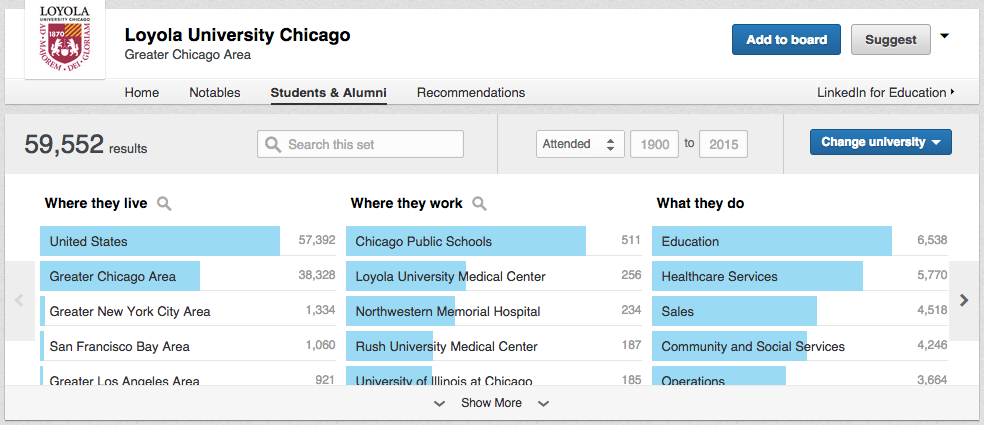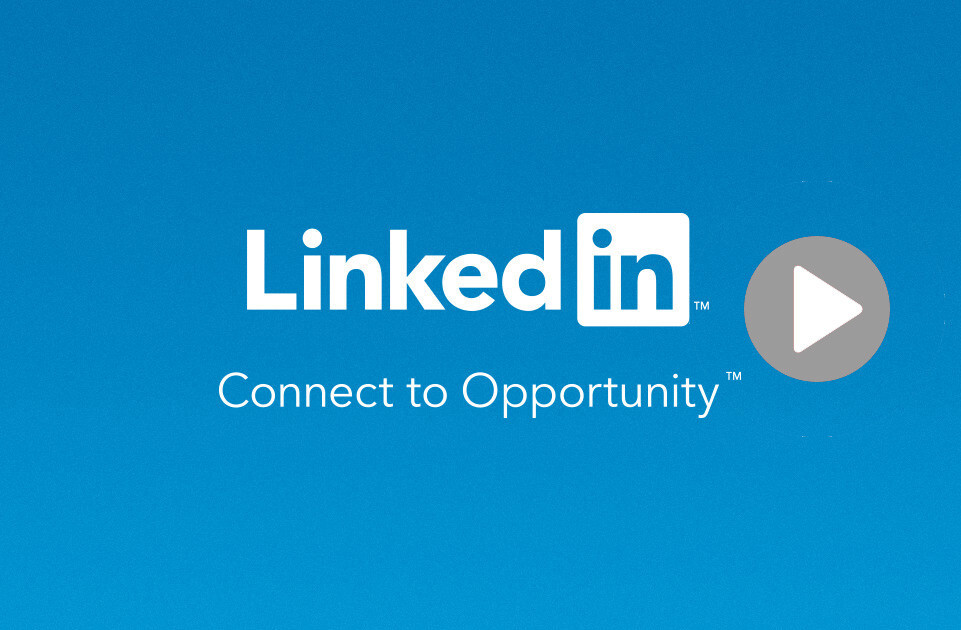
LinkedIn has quickly evolved from being a social network for job seekers and recruiters to an expansive platform assisting professionals with every step in their careers, making it an ideal destination for universities as well.
It is understood at this point that setting up a LinkedIn University Page and creating LinkedIn Groups are beneficial for alumni engagement. Universities are also well served in leveraging LinkedIn Company Pages to recruit faculty and staff. But these features only begin to scratch the surface of all that the social network offers the higher education market.
There are a variety of other opportunities on LinkedIn that enable universities to more effectively reach prospective students, encourage current classes to share their experiences, understand patterns in alumni employment and facilitate continued learning online. So, if you work in higher education, consider these five often overlooked LinkedIn tools that will help your institution make a bigger impact in an increasingly competitive industry.
1. University rankings for better branding and awareness
LinkedIn uses the data it has access to from universities, students, employees and employers to rank which undergraduate and graduate schools are sending graduates into desirable jobs across different industries.
The University Rankings feature can help your institution be more aware of your standing among competitors, what fields past students are landing jobs in, the employment landscape in different professional tracks and more. This way, your university can better market your offerings to prospective students, based off their interests and your proven outcomes.
2. Decision boards for alumni-supported recruitment
LinkedIn Decision Boards enable students to publicly or privately plan the process for applying to schools and embarking on new career paths. Invite prospective students to use Decision Boards to get a better understanding of what types of career paths are most common among your graduates, since this feature integrates with the University Rankings tool as well.
There is also an opportunity for students to collaborate with members of their network and your alumni on LinkedIn directly on their boards as well to get their feedback and analysis of their options. This exchange empowers alumni to get involved in the recruitment process with prospective students as early as possible.
3. ‘Add to Profile’ button for greater reach and engagement
To fuel your alumni networks online, it’s imperative that as many members of your community as possible are active on LinkedIn. LinkedIn makes this especially easy with the Add to Profile button for higher education institutions.

Promote the Add to Profile button—available as an embedded link for websites and emails—among your student population to make it quick and simple for them to include your university on their LinkedIn Profiles. This also will provide more data for your institution, building a stronger alumni network and making the University Rankings feature more accurately portray your school’s standing.
Profiles with education included receive 10 times more views.
4. The alumni tool for more targeted, strategic networking
The Students & Alumni section of a University Page lets LinkedIn users view any university’s alumni network. This is another useful tool for helping your university get more information about your graduates, including:
- Where they live
- Where they work
- What they do
- What they studied
- What their skills are
- How they are connected to others in the network

Your organization can use this data to better inform marketing efforts, understand how to better align your fundraising strategies and more clearly articulate your alumni network’s value to future students, since they can access it for free anytime.
5. Lynda integration for new and continued learning
Most recently, Lynda, a online marketplace of video courses, was acquired by LinkedIn and will further integrate with the social network in the months to come.
While it remains to be seen how this integration will exactly pan out, there’s a strong likelihood that the Lynda courses students take will be able to be easily added to their LinkedIn Profiles. There’s also the potential for eventually offering some of your classes online through Lynda.
If such opportunities come to fruition, your organization might consider serving up a sample of what you offer to help recruit full-time students (who might be test-driving different options). Or, you could provide enrichment courses and professional development to keep your alumni engaged. You might even be able to tap into entirely new markets that previously seemed out of reach.
All of these features speak to LinkedIn’s larger strategic plan to become more fully involved in the entire course of one’s professional career journey, with higher education playing a critical role at each juncture.
➤ This post originally appeared on Sprout Social
Read next: 4 tools for building a social media empire
Get the TNW newsletter
Get the most important tech news in your inbox each week.





